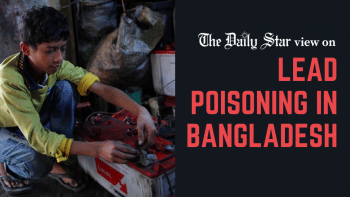Beware of health hazards in plastic toys

The extent to which our children are routinely exposed to toxic chemicals in their daily environment is deeply concerning. One of their sources is plastic toys, with a recent study on toys sold in different retail outlets in the capital revealing the heavy presence of harmful chemical substances, including lead, mercury, cadmium, and chromium. This deserves scrutiny from the authorities and parents.
The study, conducted by the Environment and Social Development Organisation and BAN Toxics, tested 150 children's products, primarily made from recycled plastics, and found that 80 percent of them contained alarmingly high levels of heavy metals. More worryingly, the harmful chemicals in these toys enter children's bodies through contact with skin, inhalation, and even saliva, as children below six often tend to put objects in their mouths. Research says that sustained exposure to these chemicals can impair their physical, cognitive, and neurological development. For example, lead exposure can cause kidney damage, while cadmium can affect bone density and respiratory function.
Many foreign economies, such as those under the European Union, use strict laws to regulate the use of toxic chemicals in plastic toys by setting out clear guidelines for manufacturers, distributors, and importers. In Bangladesh, where 80 percent of plastic toys are manufactured locally and the rest imported from China, such regulations are absent. Clear guidelines at the manufacturing levels are required since the contaminants enter production at different stages. For example, lead is used in toy paint and to soften plastic, while mercury is often used in adhesives.
In the case of imported toys, regular testing is necessary to ensure that the products follow internationally set standards for permissible levels of heavy metals. Unfortunately, children's toys are not even on the product lists tested by the Bangladesh Standards and Testing Institution (BSTI), which needs to change. Moreover, labelling these toys with hazard signs can educate parents. Mass campaigns can raise awareness about the presence of toxins in plastic products and encourage reduced use of plastics in daily lives. At the same time, we must promote the use of alternative toys that are chemically and environmentally safe. Also, we should reflect on creating a social ecosystem where friends, families, sports and nature—rather than gadgets and plastic toys—dominate the formative years of our children.


 For all latest news, follow The Daily Star's Google News channel.
For all latest news, follow The Daily Star's Google News channel. 




Comments